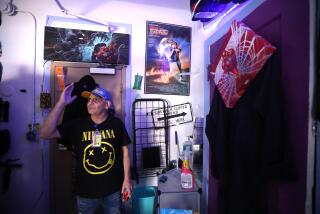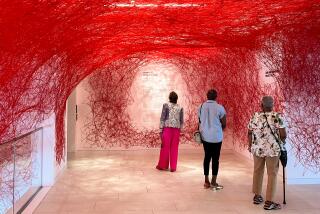What’s next for nonprofit museums after the closing of the Marciano Art Foundation?
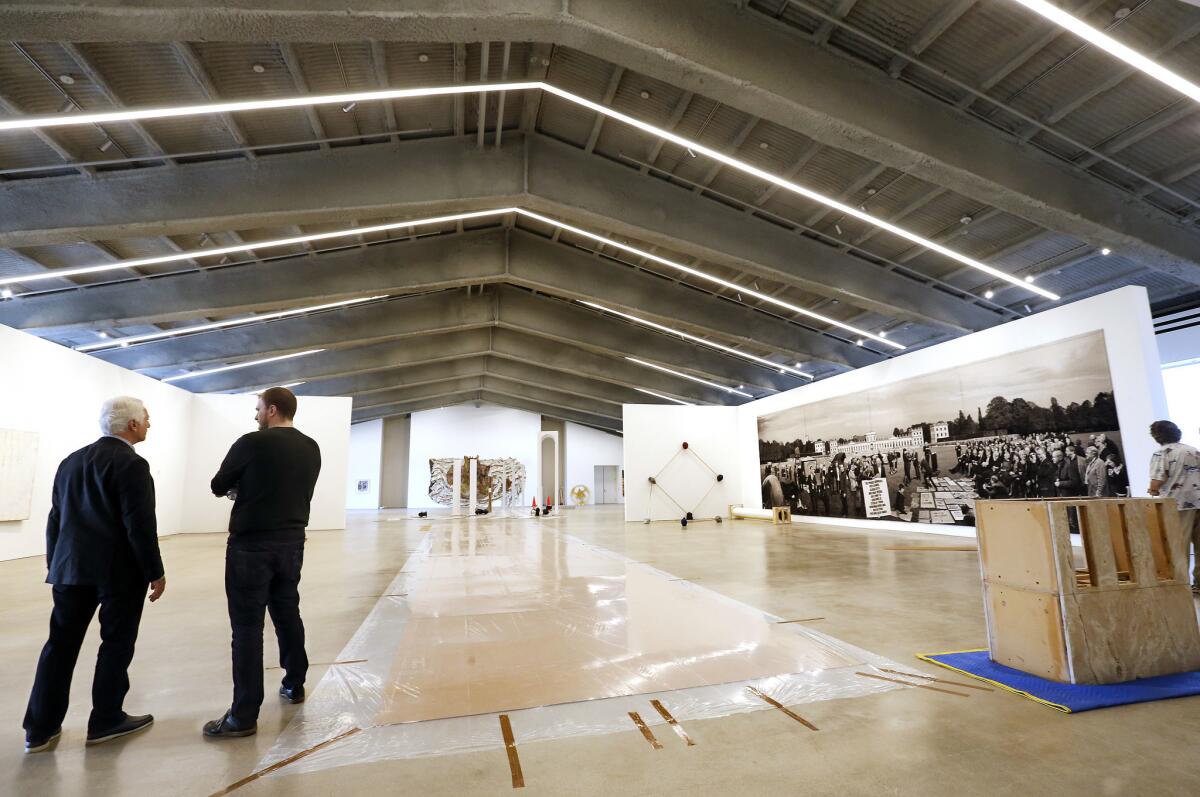
About six months before art collector Maurice Marciano and his brother Paul threw open the doors in 2017 to the Marciano Art Foundation in the old Scottish Rite Masonic Temple on Wilshire Boulevard, Maurice sat down for an interview to discuss the program for his new exhibition space.
“We don’t need another MOCA or Broad or Hammer Museum,” he told the Wall Street Journal. “It has to be different, or why do it? We want to be an incubator for artists.”
For the record:
1:38 p.m. Nov. 9, 2019An earlier version of this article reported that Jamie Goldblatt Manné left her post as the Marciano Art Foundation’s director in July. Manné departed in March.
Less than three years later, the plug appears to have been pulled on that incubator.
On Tuesday night, the Marciano Art Foundation laid off nearly six dozen visitor services employees who had been attempting to unionize. The museum then issued a public statement saying that the space would be “closed to the public until further notice.” By Wednesday, the museum had issued yet another statement: There are “no present plans to reopen.”
Staffers who had announced their intent to unionize decried the shutdown as an illegal union-busting scheme.
“It shows that they would rather shut down a ‘public service’ institution than raise wages a dime — or raise pay a dime above minimum wage,” said Spencer Longo, who worked in the museum’s visitor services department and served on the organizing committee of the Marciano Art Foundation Union.
On Thursday, the union filed an unfair labor practice charge with the National Labor Relations Board.
The museum, in a statement, said the closure was “due to low attendance the past few weeks” and that the foundation would be “closing the current exhibition early on Nov. 6 after a five-month run.”
But the story of the Marciano isn’t simply the story of a single museum. It is a story about wealth and class and labor in an art world keen to tout itself as a social good.
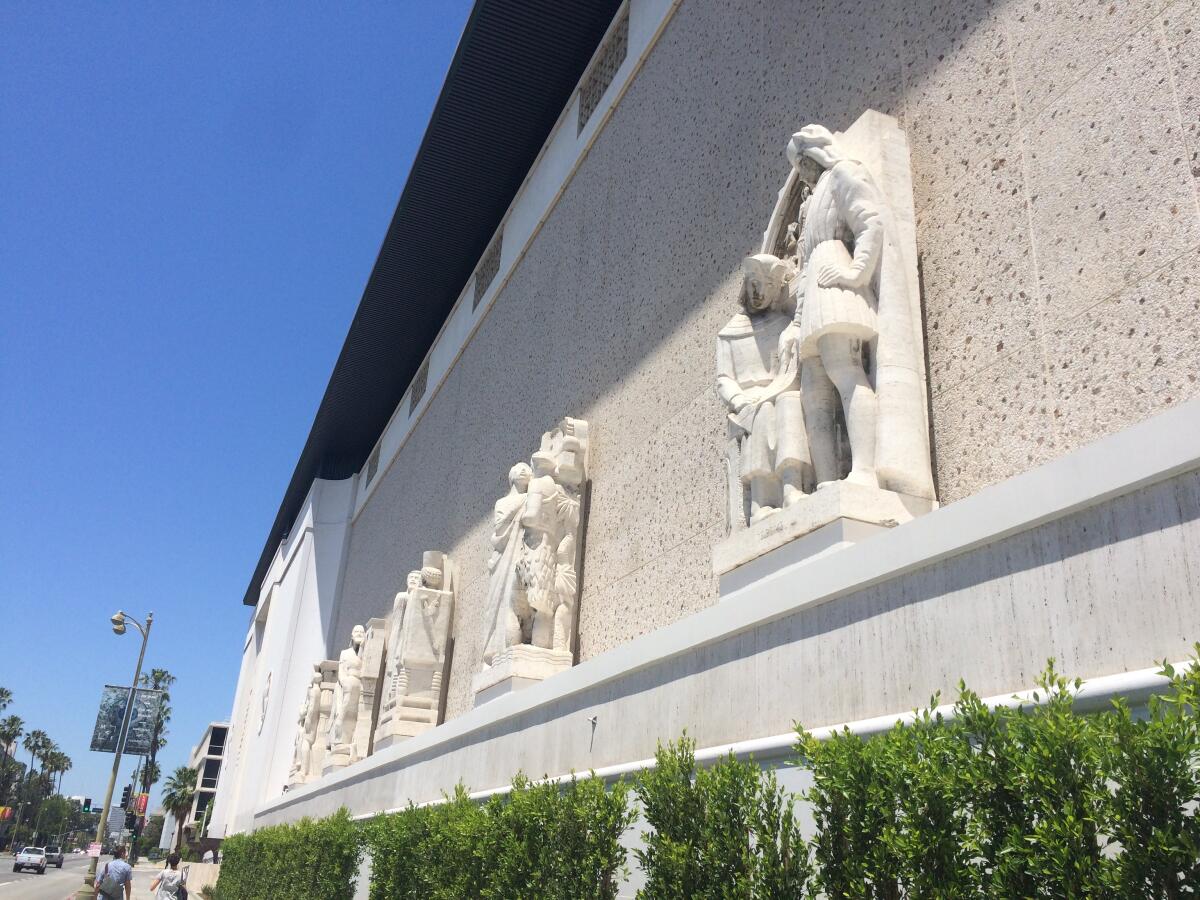
For Betsy-Ann Toffler, a part-time visitor services associate, the museum’s closure calls into question the very purpose of the foundation.
“One might think that the Marcianos have done a valuable community service by opening a museum to share their collection for free with the public,” she said. “But when you see this action you question their humanity and their true commitment to the community.”
It also highlights the problem of wages. Toffler, at 78, was older than most of the workers in visitor services (most of whom are recent college graduates) and didn’t need her job to survive. But the wages, she notes, were inadequate given the nature of the work.
“We are paid minimum wage, but what is expected of us is more than a typical minimum wage,” she said. “We are expected to do research on the work on display and impart that knowledge to our visitors. ... Nobody is paying us for the wide breadth of knowledge we have to bring to the job.”
Toffler draws attention to two issues that are currently top-of-mind in the art industry: The first is the increasing scrutiny of private art showcases such as the Marciano Art Foundation, which allow wealthy collectors to display their art tax-free. (This was an issue that Congress investigated in 2015.) The second is the issue of labor in museums, where the disparities between the salaries of those at the top and those at the bottom can be breathtaking.
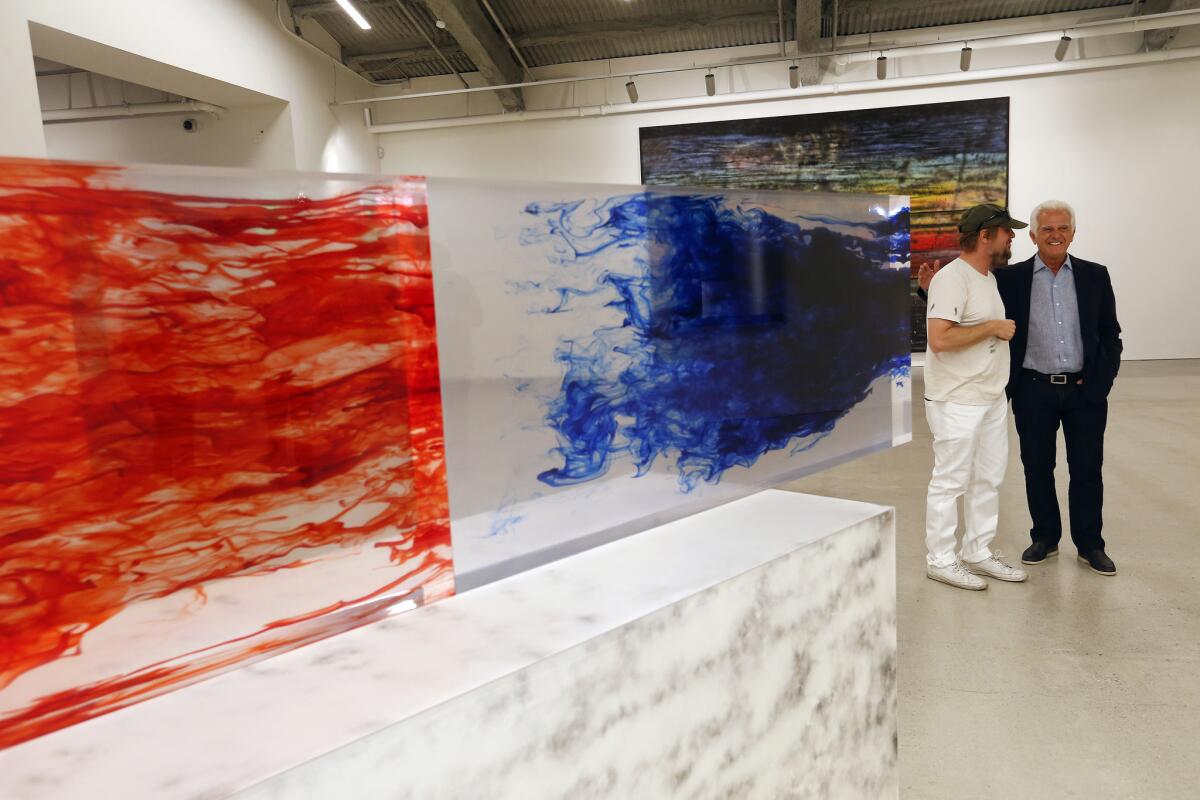
Nizan Shaked, a professor of museum and curatorial studies at Cal State Long Beach, notes that small, private art foundations like the Marciano are frequently founded by a collector, run by that same collector and showcase the collection of that collector — all to their financial benefit.
“The American nonprofit sector doesn’t account for the way in which art has become an asset,” she explained.
Collectors can forgo paying taxes on the acquisition of works by donating them to their namesake nonprofit foundation. That foundation is then exempted from paying taxes. In the meantime, the public display of a collector’s art has the potential to make that work — and work the collector may hold privately — much more valuable.
“This is at the expense of the public,” Shaked said. “In the end, these institutions function to raise the value of this art.”
Whether the Marcianos donated their collection or simply loaned the work to their foundation is unclear.
The most recent IRS 990 tax forms for the organization, from 2017, show that the organization is run exclusively by the Marciano brothers, without the oversight of an independent board. The tax forms list Maurice as director and president, and Paul as director, with no other officers or trustees. In addition, in March, Jamie Goldblatt Manné left her post as the Marciano’s director. It is unclear whether she was ever replaced.
We are paid minimum wage, but what is expected of us is more than a typical minimum wage.
— Betsy-Ann Toffler
If the museum is to remain shuttered, the art foundation’s tax exempt status could become an issue. To retain that status, said Leslie Lenkowsky, a faculty member at the Lily Family School of Philanthropy at Indiana University, they need to “run a program for the benefit of the public.”
As long as they remain closed, they are not doing that. But the foundation could shift its mission — say, become a nonprofit focused on loaning art to museums, as the Broad Foundation did in its early days.
It could also dissolve.
The question then, said Lenkowsky, “is what happens to the assets. ... They will have to make sure that assets will be used for charitable purposes, so they would have to donate the assets to a community foundation.”
Ultimately, Shaked said, the whole model should be reexamined. “There needs to be more scrutiny of how these institutions are benefiting private individuals,” she said. “We need to think about how we regulate these institutions. And maybe ask, why are they tax exempt to begin with? Are the benefits outweighing the costs to the public?”
The Marciano situation has also highlighted issues of pay equity at museums, which frequently have a coterie of well-remunerated administrators at the top, followed by a much larger subset of poorly paid workers at the bottom, many part time.
“Museums are an example of the precarious workforce,” Shaked said. “This relates to the unionization of adjunct faculty in universities” — workers who also work part time without benefits or a safety net.
The 990s for the Marciano Art Foundation don’t capture the museum’s wage scale, since the most recent forms, from 2017, cover the year before the museum officially opened. (At the time, they listed only two employees: an events manager and a facilities manager.)
But 990s from 2017 for the New Museum of Contemporary Art in New York City, which successfully unionized in January, and completed bargaining on its first contract last month, show director Lisa Phillips earning about $750,000 per year, between wages and other compensation. At the time, employees in visitor services were making $15.50 an hour.
“That’s 50 more cents than minimum wage in New York,” said Dana Kopel, an editor and publications coordinator at the museum, who also served on the New Museum Union’s bargaining committee.
“It didn’t feel like a place where management wanted us to sustain ourselves,” she said. “It felt like we were all easily replaceable to them. ... That’s a huge problem. People are making these exhibitions about equity, justice and representation and the cognitive dissonance is so intense when you are doing that type of work, but you don’t see it happening in your day-to-day.”
“Museums need to pay more, that’s part of what keeps these institutions so white,” she added. “Only certain people can afford to take these jobs — especially when they require master’s degrees.”
And it was just some of those issues that the Marciano Art Foundation Union was set to work on when the museum announced it was closing.
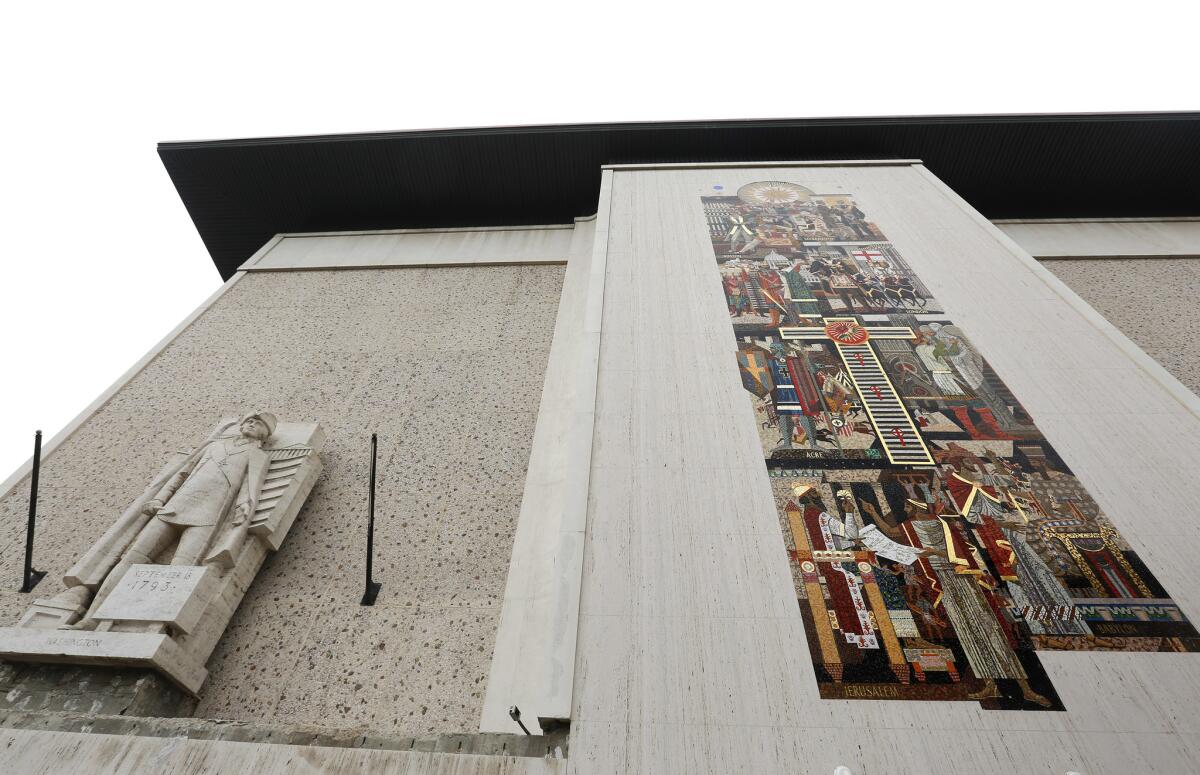
“In order to have this job you have to have a certain amount of privilege,” said Eli Petzold, a visitor services associate who was also an organizer, on the evening that the union public with their campaign. “It’s people who have gone to school. It’s people who can take a pay cut.”
“This,” added Longo, “has become about challenging the ideas within the culture industry.”
And that means taking action. On Friday morning at 10:30 a.m., visitors services associates plan to show up for work as they have in the past and will stage a protest in front of the museum.
More to Read
The biggest entertainment stories
Get our big stories about Hollywood, film, television, music, arts, culture and more right in your inbox as soon as they publish.
You may occasionally receive promotional content from the Los Angeles Times.

